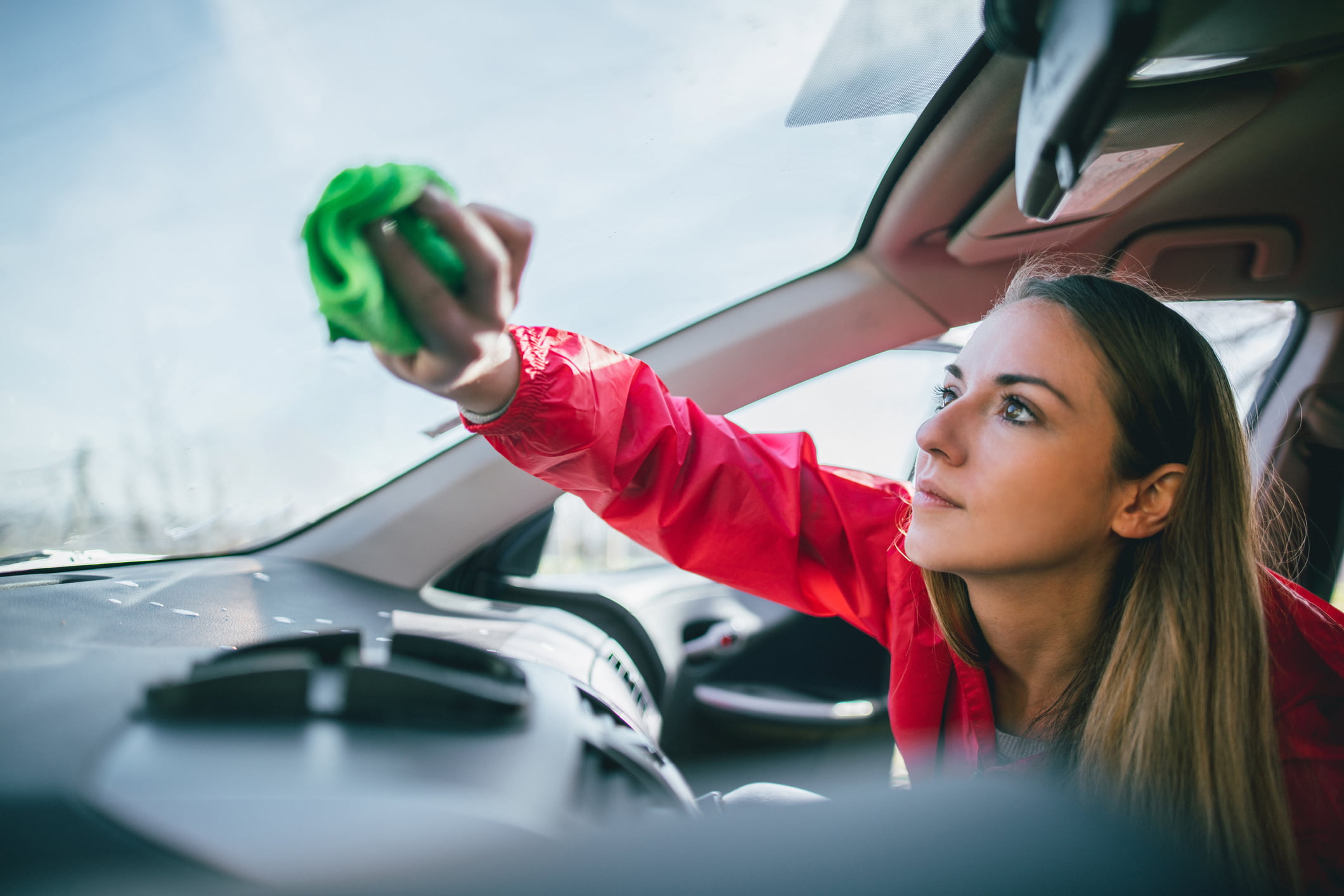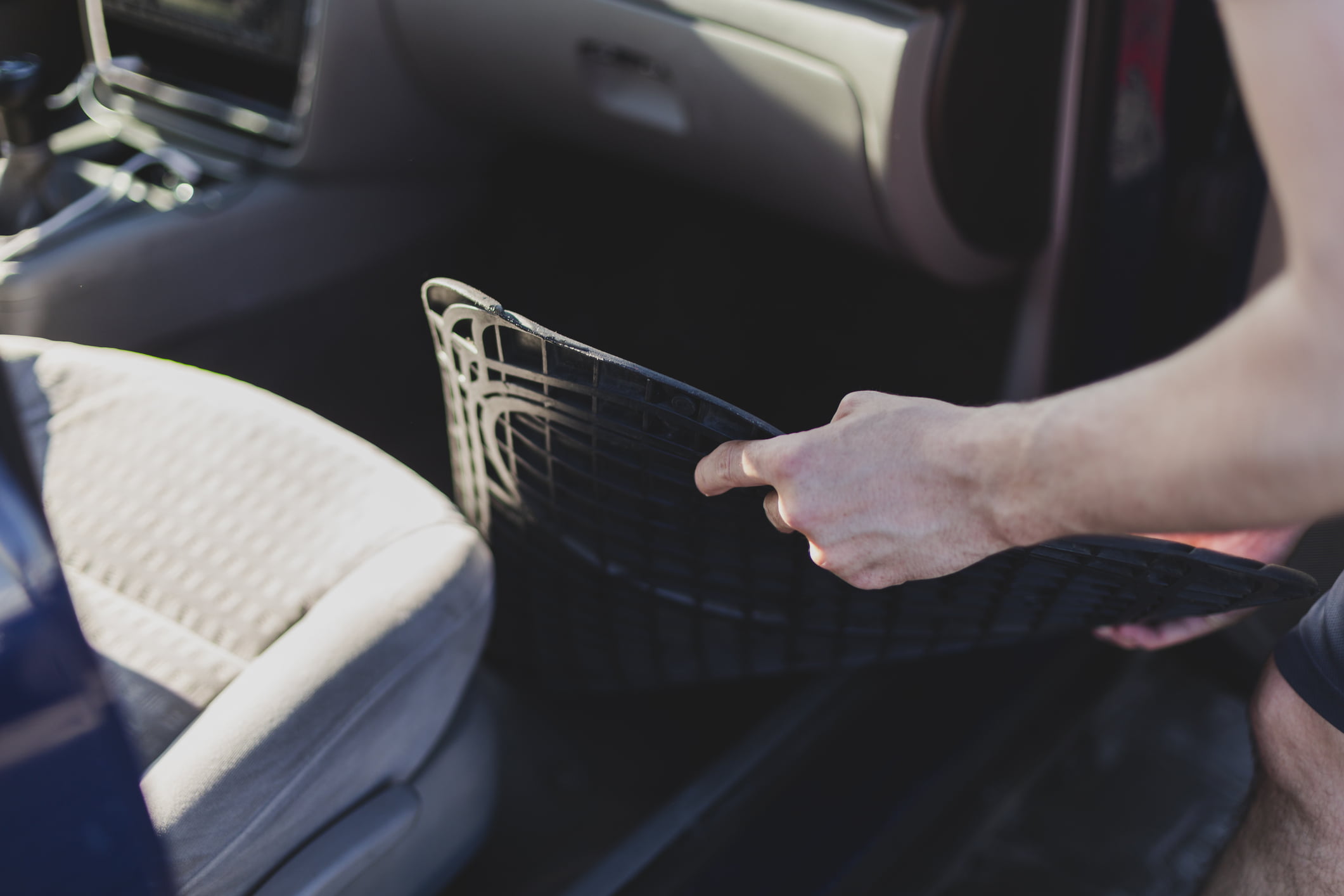
Based on an average year, Brits spend 293 hours behind the wheel, and with all that time in the car, it’s easy for germs to spread. According to CarRentals.com, around 700 strains of bacteria live in the average car. This makes it incredibly important to thoroughly clean the interior of your car, killing germs in the process.
Hygiene expert Luke Rutterford talks here about how dirty the driver’s area of the car is:
With recent events highlighting just how important it is to maintain good levels of hygiene, we’ve put together a guide on how to kill germs in your car. You’re probably by now in the habit of washing your hands as soon as you get in, but if you’re driving out to get supplies or even to work if you’re still required to, you might not have thought about keeping your car hygienic too.
With advice on the areas where bacteria is most likely to grow, tips on cleaning driving controls and components, and advice on the right products to use, this essential guide can help you keep yourself and others safe by maintaining a clean, germ-free car.
Quick Links
- Which Germs Are Common in Cars?
- What Are the Dirtiest Areas of Your Car?
- Essential Tips on Keeping Your Car Clean and Germ-Free
- Which Products Can You Use to Kill Germs in Your Car?

Which Germs Are Common in Cars?
Basically any type of germ can live in your car, including bacteria linked to coronavirus, norovirus, cold and flu. You may not think it, but cars are an absolute breeding ground for germs and bacteria, with a warm, humid atmosphere and hard-to-reach surfaces providing the ideal conditions for bacterial growth.
So, the next step you should take is to wash your car, make sure you give the inside a good clean, too. Far too many of us neglect to keep the inside of our cars clean, which essentially undoes all the work you put into keeping yourself, your family and your home clean and healthy.
What Are the Dirtiest Areas of Your Car?
Some areas of your car are more prone to germs than others. Let’s take a look at some of the places around the cabin interior that are hotspots for bacteria.
The Driver Controls
The fact is that the driver controls are among the dirtiest areas of any car. This includes the steering wheel, gear stick, hand brake, buttons and other functions you use during everyday driving.
The steering wheel itself is particularly dirty. It’s in contact with your hands all the time, meaning that germs can transfer easily and then continue to grow and spread as the wheel warms up. It’s also in the firing line for germs spread from your mouth and nose, especially when you sneeze and cough.
 The gear stick and handbrake are also prone to bacterial growth. Because they’re often covered in a leather wrap, they harbour germs that can be difficult to clean up and kill. The same goes for other leather trim, like on the armrests or seats.
The gear stick and handbrake are also prone to bacterial growth. Because they’re often covered in a leather wrap, they harbour germs that can be difficult to clean up and kill. The same goes for other leather trim, like on the armrests or seats.
How to Kill Germs and Keep it Clean:
- Regularly wipe the steering wheel and driver controls with an antibacterial wipe.
- Use hand sanitiser when entering and exiting your car.
- Have tissues to hand to catch coughs and sneezes, and put these straight in an in-car bin.
- Keep on top of cleaning and maintaining the controls regularly, using a high-quality car cleaner that’s compatible with the materials. Make sure you get into all the nooks and crannies around the steering wheel.
- Decontaminate your car’s interior with a car sanitiser which will circulate through your air conditioning system to kill germs.
The Seats
The seats in your car can harbour a huge number of germs which can be difficult to kill. Bacteria is spread to the seats by sweat, dead skin cells or through contact with clothing, as well as things like food and drink spillages.
The problem is, car seats can be quite difficult to clean, meaning they can provide a breeding ground for bacteria for long periods. Most people simply vacuum their car seats to remove visible dirt, dust and crumbs, but a much more intensive clean is needed to tackle harmful germs and bacteria.
How to Kill Germs and Keep it Clean:
- Vacuum the seats regularly to remove surface-level dirt and grime, including dead skin cells.
- Use a carpet or fabric cleaner to remove stains and dirt – make sure you get deep into the fibres to remove any spills or food as these can be unhygienic if you leave them to go bad.
- Invest in a set of removable seat covers if you’re concerned about spreading harmful bacteria from your clothes to your car.
 The Carpet
The Carpet
Carpets trap dirt and moisture, meaning bacterial growth is inevitable. It’s easy to spread all sorts of germs from your shoes on to the carpet and mats of your car, where they can easily spread to other areas and hamper your car’s cleanliness.
Carpets, like seats, are often overlooked when it comes to a deep clean. Most of us just vacuum up the visible dirt and crumbs, but this isn’t enough to kill any germs which may be breeding in the fibres.
How to Kill Germs and Keep it Clean:
- Stay on top of vacuuming your car’s carpets. Any dirt, moisture or crumbs from food can lead to a huge growth in bacteria, so weekly vacuuming is essential.
- Again, use a carpet or fabric cleaner to get rid of stains and dried in dirt.
- Make sure you replace the car mats regularly; rubber mats are great for helping to reduce moisture in the carpet, and are also easier to clean.
- Consider swapping your shoes each time you get behind the wheel. Wearing a pair of driving shoes will help prevent the spread of bacteria.
Essential Tips on Keeping Your Car Clean and Germ-Free
Here are a few helpful ways to keep the inside of your car clean and reduce the number of germs in the interior:
- Clean the inside of your car 1-2 times a week if you drive regularly – just like you would with your home!
- If you’re ill, wipe the steering wheel and dashboard regularly
- Remove all rubbish whenever you leave your car – rubbish, like food wrappers, are magnets for germs and bacteria, so remove all that trash each and every time you park up.
- Keep a pack of tissues and antibacterial hand gel to hand – catch those coughs and sneezes to prevent the spread of germs, and use an antibacterial hand gel to prevent contaminating the driving controls with bacteria.
- Think about children! Children’s car seats can be a breeding ground for germs, as children tend to be messier and might eat in the car, so make a special effort to get rid of crumbs, clean up spills and wipe the seat regularly with anti-bacterial wipes.
Watch our video from Hygiene Expert Luke Rutterford on the importance of keeping a car seat clean:
Which Products Can You Use to Kill Germs in Your Car?
There are lots of products you can use to kill germs in your car, but the important thing is to make sure they’re suitable and safe to use with a particular type of material. For example, standard household antibacterial wipes may not be safe to use on leather seats or trim, while you should always avoid any products which contain bleach, as these can discolour and damage upholstery and plastic surfaces.
For more information and advice on keeping your car clean, take a look at the Simoniz blog. To browse our range of car maintenance and cleaning products, visit the homepage today.
